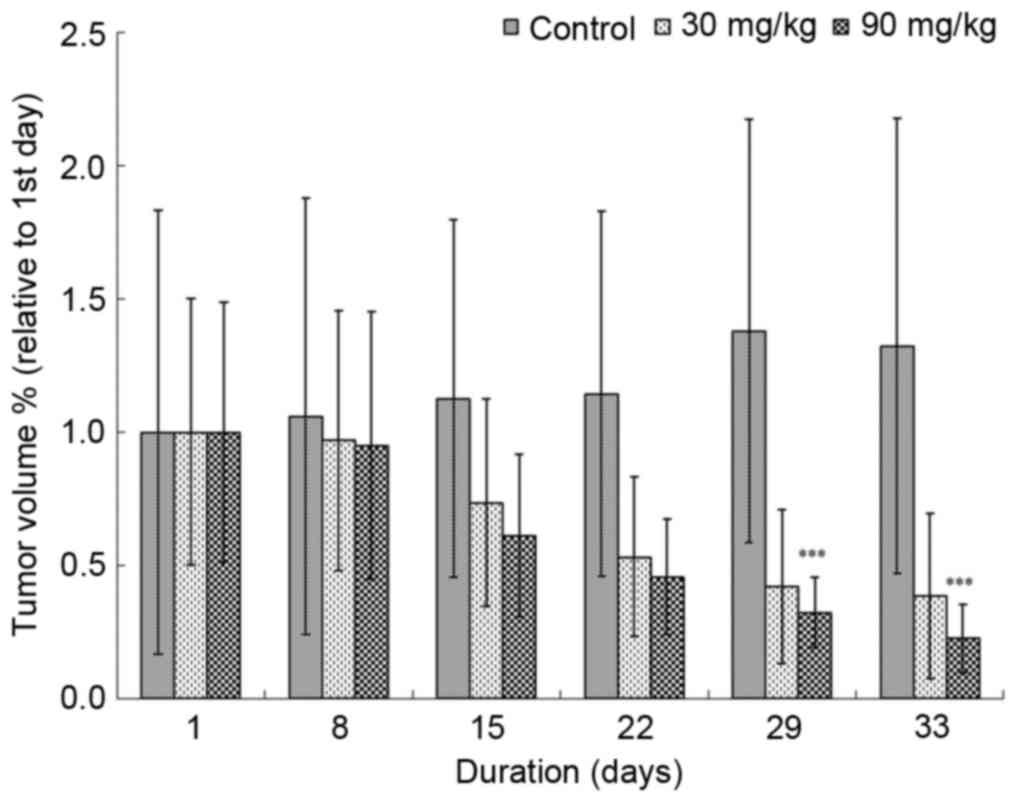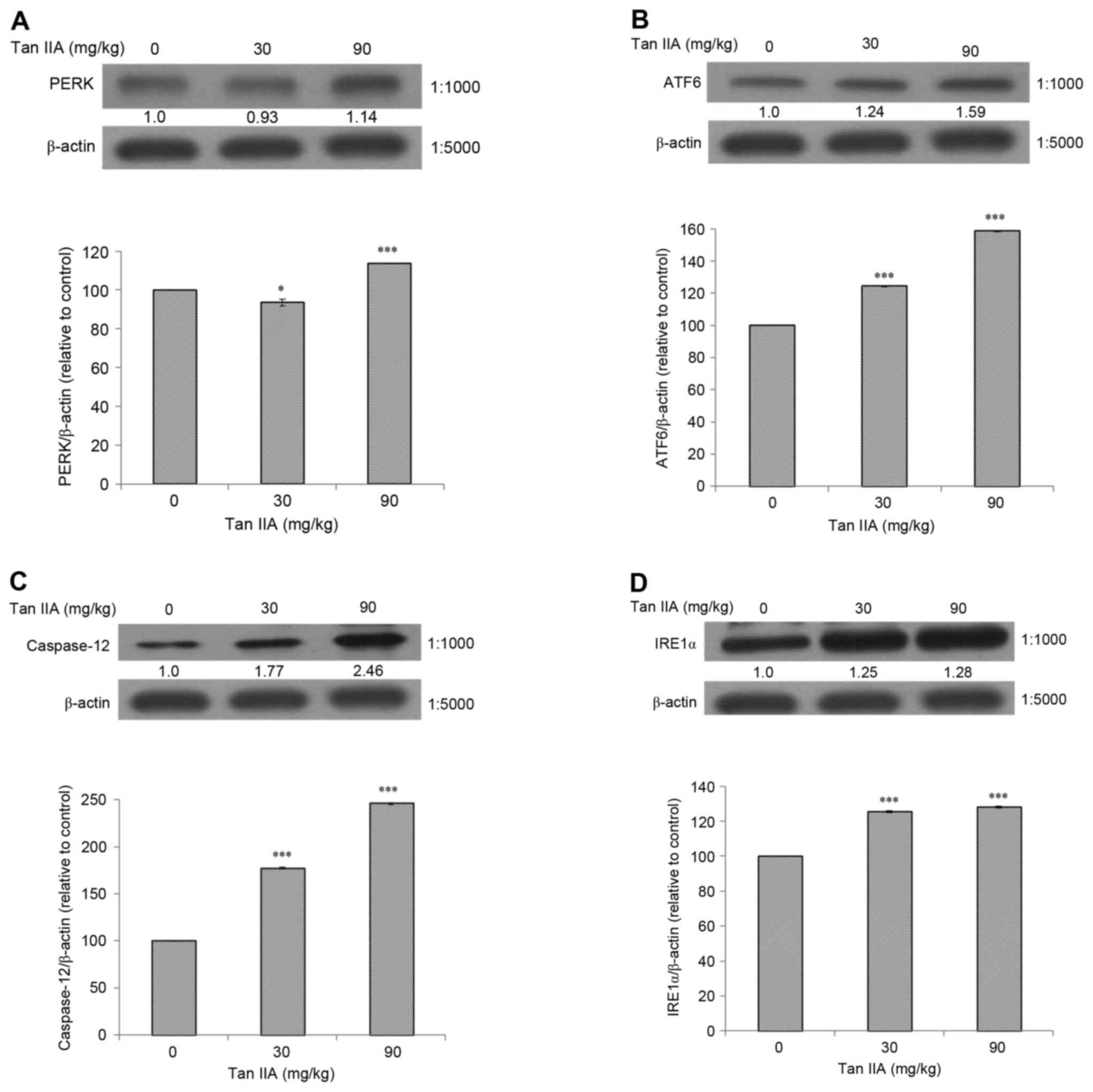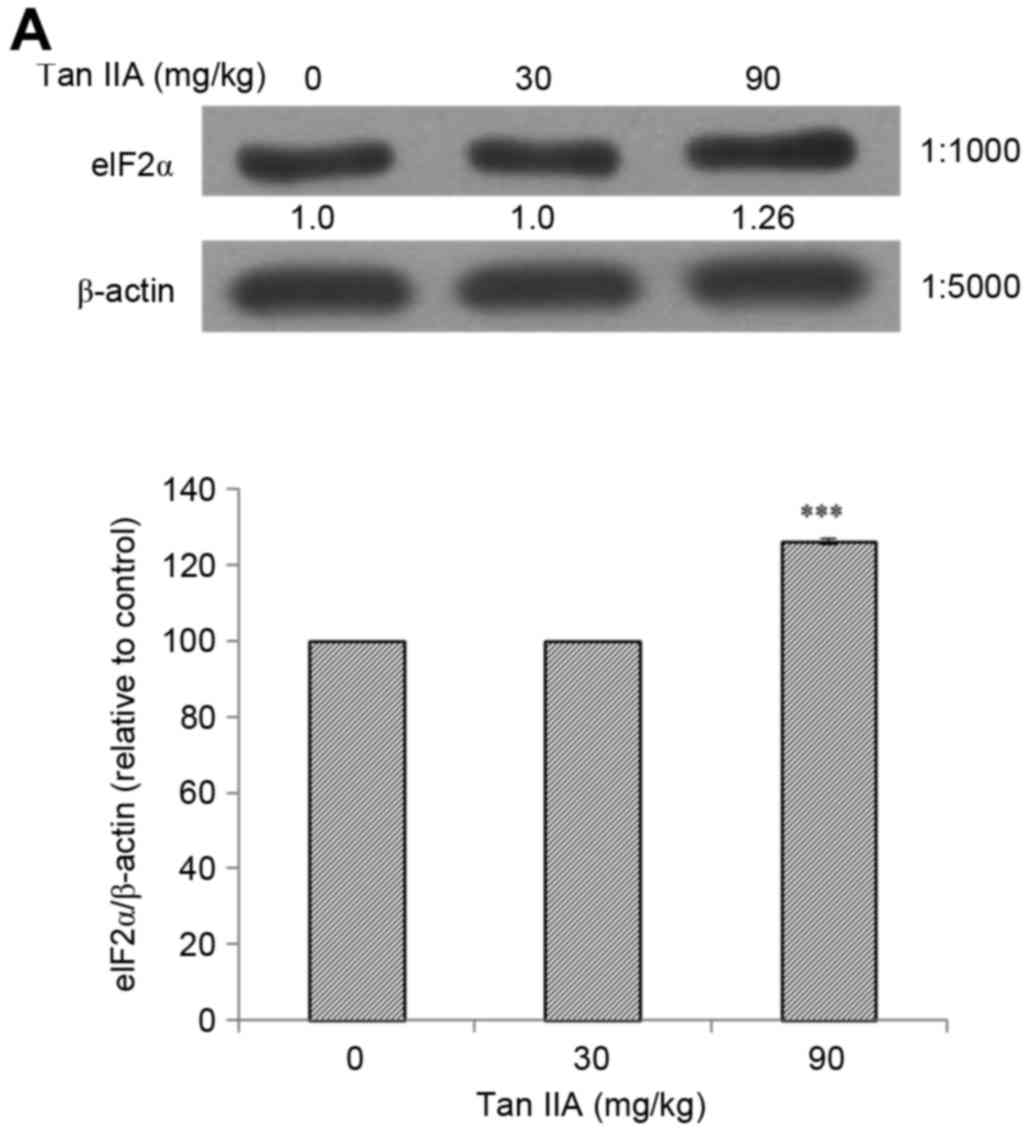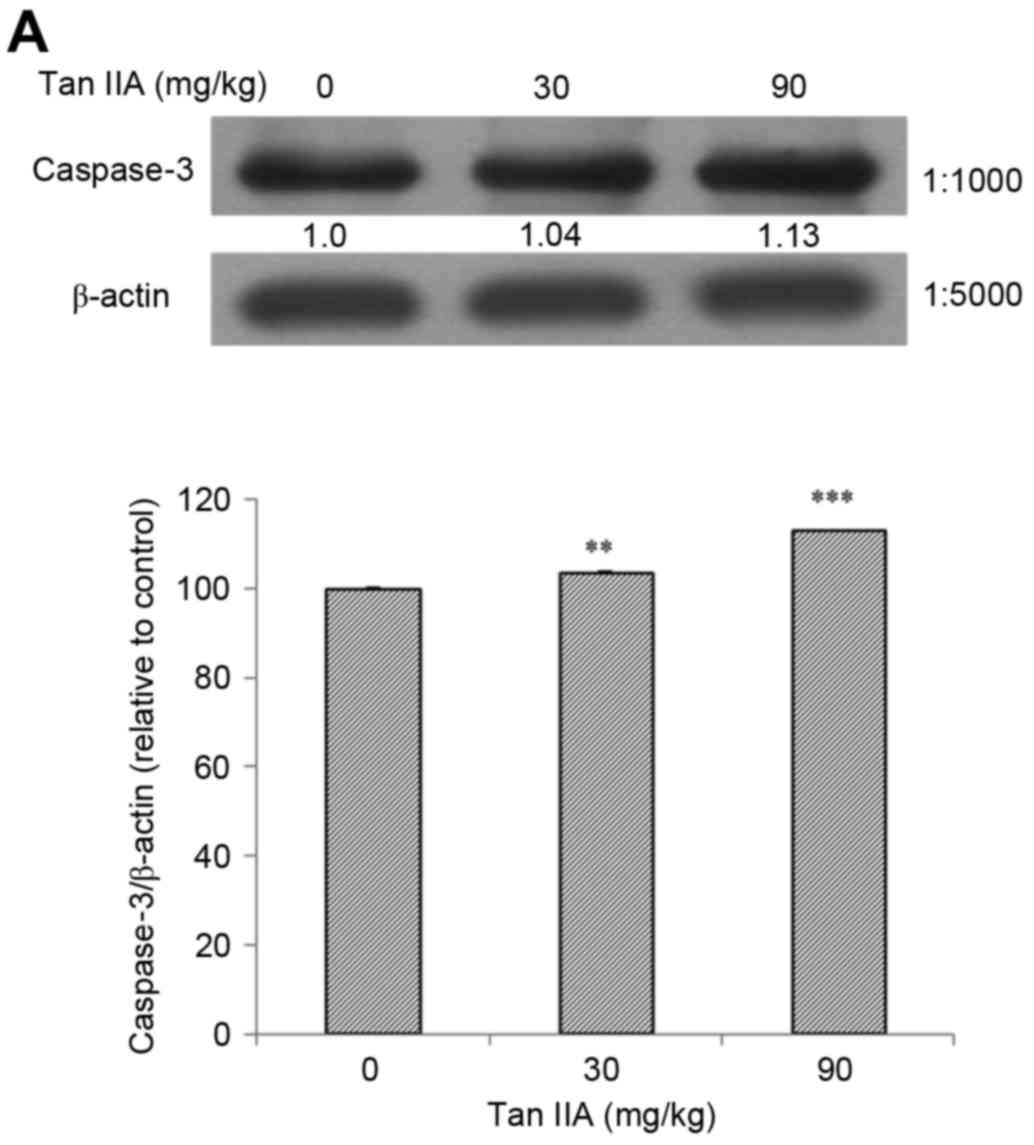Tanshinone IIA increases protein expression levels of PERK, ATF6, IRE1α, CHOP, caspase‑3 and caspase‑12 in pancreatic cancer BxPC‑3 cell‑derived xenograft tumors
- Authors:
- Published online on: March 22, 2017 https://doi.org/10.3892/mmr.2017.6359
- Pages: 3259-3263
Metrics: Total
Views: 0 (Spandidos Publications: | PMC Statistics: )
Total PDF Downloads: 0 (Spandidos Publications: | PMC Statistics: )
Abstract
Tanshinone (Tan)-IIA is a derivative of phenanthrenequinone and the main active ingredient isolated from Salviae miltiorrhizae radix (Danshen). Previous studies have demonstrated that Tan‑IIA increased the protein expressions levels of protein kinase RNA‑like endoplasmic reticulum kinase (PERK), activating transcription factor (ATF) 6, caspase‑12 and CCAAT‑enhancer‑binding protein homologous protein (CHOP), to induce endoplasmic reticulum (ER) stress and apoptosis in human pancreatic cancer BxPC‑3 cells. However, to the best of our knowledge, the effects of Tan‑IIA on pancreatic cancer cells have not been investigated in vivo. Further studies are required to elucidate the therapeutic potential of Tan‑IIA in inducing ER stress in cancer cells in vivo. The present study aimed to investigate the effects of Tan‑IIA on the expression of ER stress‑related proteins in BxPC‑3‑derived xenograft tumors. A total of 30 male severe combined immunodeficiency mice (age, 4 weeks) were implanted with BxPC‑3 cells (2x106/0.2 ml) and subsequently treated with various doses of Tan‑IIA (0, 30 and 90 mg/kg) for 4 weeks. After mice were sacrificed on day 33, the xenograft tumors were dissected and total protein was extracted for western blot analysis. The results of the present study demonstrated that Tan‑IIA inhibited the growth of BxPC‑3‑derived xenograft tumors. In addition, Tan‑IIA increased the protein expression levels of PERK, ATF6, caspase‑12, inositol‑requiring enzyme (IRE) 1α, eukaryotic initiation factor (eIF) 2α, phosphorylated (p)‑c‑Jun N‑terminal kinase (JNK), CHOP and caspase‑3 in a dose‑dependent manner. These results indicated that Tan‑IIA induced ER stress via increasing the protein expression levels of PERK, ATF6, caspase‑12, IRE1α, eIF2α, p‑JNK, CHOP and caspase‑3 in BxPC‑3 cells in vivo. Therefore, it may be hypothesized that Tan‑IIA has potential for the development of novel therapeutic strategies for the treatment of patients with pancreatic cancer.













